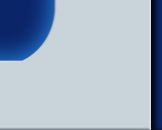|
The following is a list of Features implemented in the current version of Iupiter. To view the change log, please click here.
- Highly optimized scene graph that includes geometries, lights, cameras and any other object of the scene
- Bounding volumes: bounding spheres and axis aligned bounding boxes
- Object Partitioning System based on a sphere tree
- Spatial Partitioning System based on an octree
- Collision Detection using bounding volumes, Object Partioning System and Spatial Partitioning System
- Advanced material system
- fully support of the OpenGL Fixed Pipeline to ensure the best backward hardware compatibility:
- per vertex Blinn shading
- dynamic and static cube environmental mapping
- cartoon shading
- DOT3 bump mapping
- full support of the OpenGL Shader Language (GLSL) to realize stunning effects
- per pixel Blinn and Phong shading
- bump mapping
- composite material with support for multi-pass effects and multimaterial
- Render To Texture support for 2D textures and cube maps
- Support of mipmapping, multitexturing and cube environmental mapping
- Image loading based on DevIL library and AWT: support all common image formats (BMP, JPG, TGA, PNG, DDS and so on)
- Fully dynamic lighting system
- support for light zone and attenuation with bounding sphere approximation
- support for multiple directional and omnidirectional lights
- volume shadows based on stencil shadows
- z-pass algorithm
- z-fail algorithm
- hardware accelerated via vertex shader algorithm
- View Frustrum Culling to increase the performances
- Picking System with per triangle and per volume accuracy
- Animation System based on key frames and
Fuze3D Character Animation (a Java Cal3D implementation)
- Scene loading from ASE and 3DS files
- Support for hardware accelerated GUI and console
|


